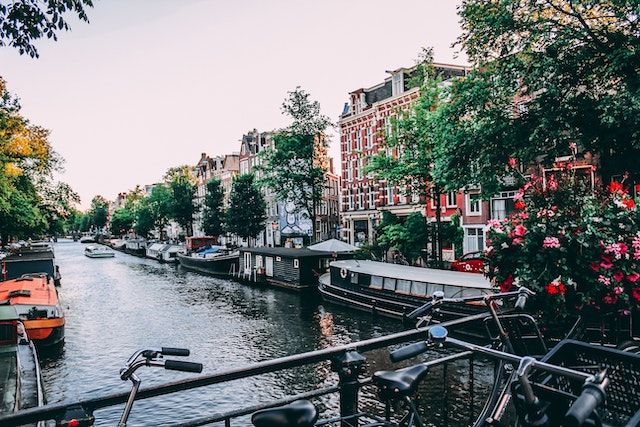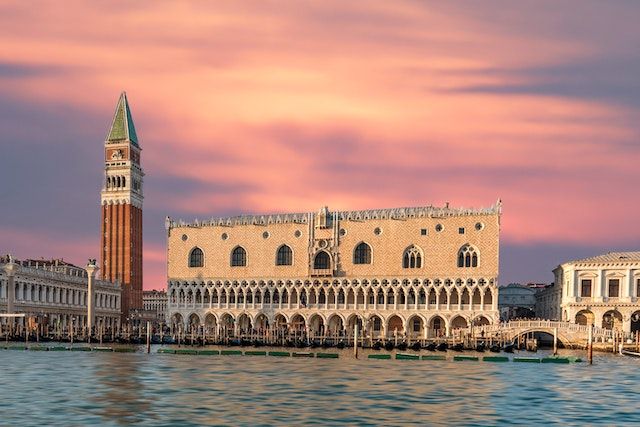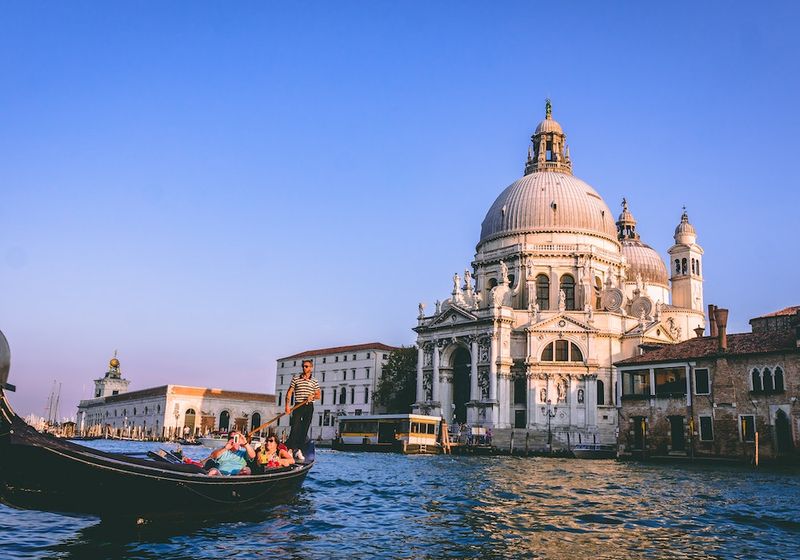Hey there, passionate explorer! Today, we're diving into a topic that will tickle your travel senses and expand your horizons beyond the iconic canals and gondolas. Strap in, because we're about to embark on an adventure that will reveal the countless Venices scattered across the globe.
The renowned Bolognese singer-songwriter, Guccini, also dedicated poetic verses to Venice in the eponymous, melancholy song from the 1981 album "Metropolis."
However, our interest in this article does not turn to that Venice.
Exploring How Many Venices Exist Around the World
You might be thinking, "Wait a minute, aren't we talking about Venice, Italy?" Well, yes and no! While the queen of canals holds a special place in our hearts, there are actually several other Venices peppered across the world, each offering a unique slice of Venetian charm.
So, let's put on our explorer's hats and jet-set to some unexpected places where Venices have sprung up.

Believe it or not, Venice's allure has sparked creativity in various corners of the globe.
From the neon-lit streets of Las Vegas, often dubbed "The Venice of America," to Suzhou in China, renowned for its exquisite canals and bridges, these replicas pay homage to the elegance of the original Venezia.
But it doesn't stop there! You'll find a Venice in miniature in Birmingham, England, where its charming canals evoke the essence of the Italian city.
There is so much more!
And speaking of canals, even the stunning Cape Town in South Africa boasts its own version, complete with waterways and colorful facades. These distant Venices, though far from the original, infuse a touch of magic into their local landscapes.
Venezia All Around the World: Amsterdam, the Venice of the North
Amsterdam, Netherlands: Ahoy, explorers! Hold onto your tulip hats as we venture into the captivating world of Amsterdam, often dubbed the "Venice of the North."
This city boasts not only its iconic canals but also an irresistible blend of history, culture, and sheer charm. Cruise down the UNESCO-listed canals, where each bridge and canal house seems to whisper tales of the past.
As you soak in the artistic vibes at the Van Gogh Museum or pedal your way through the labyrinthine streets on a bicycle, you'll realize that Amsterdam's Venice-like allure is a melody that resonates with every traveler's heart.
This watery wonderland brings the spirit of Venice to a whole new level, offering a tapestry of experiences that will leave you utterly enchanted.
Navigating Your Way Through Amsterdam's Waterways and Beyond
Amsterdam, Netherlands: Ready to embrace the Venice of the North? Begin your journey by exploring the historic Canal Ring, a UNESCO World Heritage site that winds through the heart of the city.
So as mentioned
Hop on a classic canal cruise or opt for a leisurely stroll along the water's edge to capture those picture-perfect moments. Don't miss the Anne Frank House, a poignant reminder of history, and the vibrant flower market that adds a burst of color to the city's canals.
An important story
The Venice of narrow streets and canals, the romantic Venice that is often emulated with names such as "Venice of the North" or "Little Venice," has been identified in many other locations outside of Italy. It is prudent to be skeptical about these imitations, yet it is equally true that any emulation is an act of homage and appreciation, an affirmation of love.
And then?
Perhaps this makes Venice the most beloved destination for travelers. Amsterdam is the first city that comes to mind when looking for a location reminiscent of Venice. Its 165 canals are the hallmark, and the best way to discover them is through a boat tour.
Along the canals stand the city's most beautiful and typical buildings: from the Westertoren church to the Anne Frank house, from the Magere Brug bridge near the Carré Theater to the old harbor, the Oosterdok dock, and numerous other attractions, some of them lesser known.
Anecdote to find out more
In addition, houseboats, houseboats inhabited year-round, dot the canals and some of them are available for rent as hotels.
Venezia All Around the World: Singel
A famous example is the Singel, the canal that hosts the flower market. It is distinguished by its uniqueness: instead of traditional stalls, flowers and plants are displayed on floating barges, a custom dating back to the past when such products arrived here by sea.
Venezia All Around the World: Lubecca
Moving about 1400 kilometers north of Venice and 525 kilometers east of Amsterdam, we arrive in Lübeck.
For anyone who has read Thomas Mann's work "The Buddenbrooks," the German city of Lübeck deserves the nickname "Venice of the North." This pretty medieval town was once a powerful capital of the Hanseatic League and is characterized by narrow streets and Gothic churches. Its center is surrounded by a water canal and has been a UNESCO World Heritage Site since 1987.
To access it, one passes through the Hostentor, a 15th-century fortified gate that has become a symbol of the town, recognizable worldwide since it has been depicted on 50-mark banknotes for decades.
Another Little Venice in Italy: Comacchio
In Italy, even romantic towns laden with art and history seem to recall Venetian influence. One of these is Comacchio, located near the Po delta on the coast of Ferrara. This lively town, built on thirteen islets, is famous for events such as the Sagra dell'Anguilla (Eel Festival) and motorboat excursions through hidden corners of marshy vegetation.
Comacchio is known both as the "Little Venice" and as the "city of water and history," and those interested in the mainland will appreciate the religious and civic architecture, from the ancient Manifattura dei Marinati to the 8th-century Cathedral of San Cassiano and the 14th-century Clock Tower.
Colmar is another example
Between the Vosges and the Rhine, the pretty Alsatian town of Colmar is distinguished by its characteristic half-timbered houses (known as "colombages") and monumental flowered balconies. Its "Little Venice" corresponds to the fishmongers' quarter across the Turenne and Saint-Pierre bridges.
Originally inhabited by merchants, boatmen and wine makers who transported their goods in gondola-like boats along the Lauch River, this district offers a charming view of the old city. At night, it lights up with a thousand lights from restaurants serving authentic Alsatian cuisine.
What about Bologna?
Back in Italy, even Bologna, famous for its porticoes, ragù and lasagna, leaning towers (Asinelli and Garisenda), goliardic spirit and university, hides a "Little Venice" in its heart. In the 13th century, Bologna was an important center of trade, including by water thanks to its canals.
This part of Bologna, with its canals still in view, has survived in a small way. Bologna's Little Venice is located in the Two Towers area, along streets such as Via Piella, Via Capo di Lucca and Via della Grada. Here, unsuspected streams flow between the buildings, unlike many other waterways that have been covered by asphalt for urban regulation needs.
...and not only
Bologna and Venice are two very different cities for many reasons, but you may be noticing some similarities or characteristics that make you think Bologna looks like Venice. Here are some possible reasons:
Canals and Water:
Although not to the same extent as Venice, Bologna has a number of canals and waterways running through the city. Parts of Bologna are built around these canals, creating a unique atmosphere similar to that of Venice.
Architecture:
Both cities have a rich history and fascinating architecture. Bologna is famous for its arcades, which offer a sense of uniqueness and a certain cozy atmosphere, similar to the structure of Venetian buildings.
Atmosphere:
Both cities have a vibrant cultural and artistic atmosphere. Bologna is a university city with a young and diverse population, while Venice is known for its art festivals, Biennale and other cultural events.
Culinary culture:
Both Bologna and Venice boast a rich culinary tradition. Bologna is famous for its Emilian cuisine, which includes dishes such as fresh pasta and meat sauce. Venice is known for its fish and seafood dishes, thanks to its lagoon location.
Historic center:
Both cities have charming historic centers with narrow streets, picturesque squares, and historic buildings. This could create an "old world" feeling that could recall the atmosphere of Venice.
However, it is important to note that despite some similarities, Bologna and Venice are unique in their own ways. Venice is famous for being built on a series of islands in the lagoon, with canals serving as main roads, while Bologna is located inland and has a different urban structure. The reasons why Bologna seems to remind you of Venice may vary according to your personal experiences and impressions.
Venezia All Around the World: Las Vegas
And, finally, there is the city of gaming, Las Vegas. Here, every hotel aims to emulate a geographical, mythological or fantastic place, and Venice is no different.
The Venetian hotel, one of the most lavish and expensive in Las Vegas, offers an unconvincing version of Venice: a glossy, glossy representation, the Rialto Bridge intact, with a fake sky inside the lobby, creating the illusion of a blue sky outside.
Some Americans, who may have seen the Venetian Hotel first before the original city from which it draws inspiration, sometimes prefer it for its luxury and splendor. This, unfortunately, also happens.
Your Adventure Continues!
As our journey across the world's Venices unfolds, we invite you to join us in unearthing the rich tapestry of these unique cities. From the dazzling lights of Las Vegas to the poetic allure of Suzhou, the Venices of the world beckon with open arms.
As you prepare to embark on your globetrotting escapade, keep your travel spirits high and your curiosity piqued. The story of Venice is vast, and we're here to guide you through every chapter. So, stay tuned, fellow wanderer, because there's a world of Venetian wonders waiting for you to explore!
Navigating Your Way to These Venices Beyond Borders
Las Vegas, USA: Touch down in Las Vegas, and you'll find yourself transported to a world of opulence and extravagance. Head to the Venetian Hotel, where the Grand Canal Shoppes will take you on a gondola ride through an indoor canal, surrounded by stunning architecture reminiscent of Venice.
It does not end here
Suzhou, China: For an authentic Chinese twist on Venetian beauty, hop on a plane to Suzhou. Stroll along the narrow waterways of Pingjiang Road, marvel at the ancient gardens, and take a boat ride through the enchanting canals.
Birmingham, England: A quick journey to Birmingham will reveal a delightful surprise – its very own Venice! Meander along the Birmingham Canal Navigations, soak in the vibrant atmosphere, and discover a Venetian vibe in the heart of England.
Continues...
Cape Town, South Africa: Halfway across the world lies a Venice that'll leave you awestruck. Take a leisurely cruise along the canals of the V&A Waterfront, surrounded by the mesmerizing blend of African and Venetian aesthetics.
Intrigued? There's More to Uncover!
As you can see, Venice's influence stretches far beyond its cobblestone streets. These mini Venices, scattered like hidden gems across the world, remind us of the city's timeless appeal. So, whether you're wandering the vibrant casinos of Las Vegas or exploring the tranquil waterways of Suzhou, you're bound to find a piece of Venezia wherever you go.
What should you know about Venice?

Venice, the "Most Serene Republic of Venice," is a city without equal in the world. Located in the northeastern region of Italy, Venice is a fascinating labyrinth of canals, winding calli (streets) and lavish palaces built on an archipelago of 118 islands in the middle of the Venetian Lagoon. With a history spanning more than a millennium, Venice has captured the imagination of visitors, artists and writers from around the world.
History and Foundation
The history of Venice began in the 8th century, when its first inhabitants took refuge on the islands of the lagoon to escape barbarian invasion. Over time, these settlements grew into a powerful and extremely influential city. Over the centuries, Venice established itself as one of the world's major trading centers, thanks to its strategic location along the trade routes between Europe and the East.
Art and Culture (Visit Venice, is the cultural heritage)
Venice has always attracted artists, writers and intellectuals from all eras. In the Renaissance, the city was an important cultural center, with the likes of Titian, Tintoretto and Veronese creating extraordinary works of art. Venetian architecture is a fascinating mix of styles, with Eastern and Western influences blending in magnificent buildings such as St. Mark's Basilica and the Doge's Palace.
Architecture and the Canals (the characteristic Grand Canal)
What makes Venice truly unique is its architecture built above the water. The opulent palaces and majestic churches seem to emerge directly from the waters of the lagoon. Canals, instead of streets, are the main communication route within the city. Gondolas and vaporettos serve as public transportation, offering spectacular views of Venetian monuments as you cruise along the tranquil waters.
Carnival and Traditions
One of Venice's most iconic celebrations is the Carnival, an annual event that dates back to the 13th century. During Carnival, the city is transformed into a theater of elaborate costumes, fascinating masks and lavish parties. This period is celebrated worldwide for its extraordinary beauty and festive atmosphere.
Challenges and Concerns
However, Venice faces significant challenges. Water erosion and steadily rising sea levels threaten the physical survival of the city. Measures to protect Venice, such as the MOSE (Electromechanical Experimental Module) project, have been implemented, but the issue remains critical.
In addition, mass tourism has strained infrastructure and the balance between residents' daily lives and the influx of visitors.
Conclusions
Venice is much more than a city. It is a work of art, a historical and cultural treasure, a testament to human genius and the ability to adapt to a unique environment. The city continues to enchant and inspire anyone who visits, offering a journey through time through romantic alleys, sumptuous palaces, and a network of canals that make it truly unique in the world. Facing challenges but still vibrant with life, Venice remains one of the most fascinating and extraordinary destinations our planet has to offer.
Venice, with its timeless atmosphere and timeless charm, is more than just a tourist destination. It is a symbol of resilience, adaptation and unparalleled beauty. As the waters of the lagoon lap the foundations of this enchanted city, Venice continues to defy time and adversity, demonstrating the inherent strength that humanity can have in the face of the greatest challenges.
To know
The history of Venice teaches us much. It reminds us that, even in a hostile and unique environment such as the lagoon, human ingenuity can build extraordinary wonders. From the first palaces built on wooden poles driven into the mud of the islands to the creation of unparalleled works of art, Venice is a monument to human creativity and tenacity.
However, the challenges Venice faces today cannot be ignored. Rising sea levels, deteriorating structures, and mass tourism are real threats that require decisive action. Projects such as MOSE testify to a commitment to protecting this unique and precious city, but this requires ongoing efforts and a long-term vision.
The future
The future of Venice cannot be separated from an understanding of its past. Venetian residents are the true custodians of this city, and balancing the needs of residents with the desires of visitors is a constant challenge. Preserving Venice's unique identity requires a balanced approach that promotes environmental and cultural sustainability.
As we reflect on the magnificence of Venice, we must also consider the role each visitor plays in its destiny. The experience of exploring the canals and narrow streets should be accompanied by a deep respect for the city's history and vitality. Education about the challenges Venice faces can help promote conscious and responsible tourism.
To conclude
In conclusion, Venice remains a precious jewel in the ring of human history. Its ability to face adversity, adapt to changing conditions, and inspire future generations is its true heritage. Every stone, every canal and every bridge tells a story of ingenuity and passion. Venice is a constant reminder to preserve the best of our past as we look forward, to ensure that this enchanted city can continue to enchant future generations with its timeless magic.

